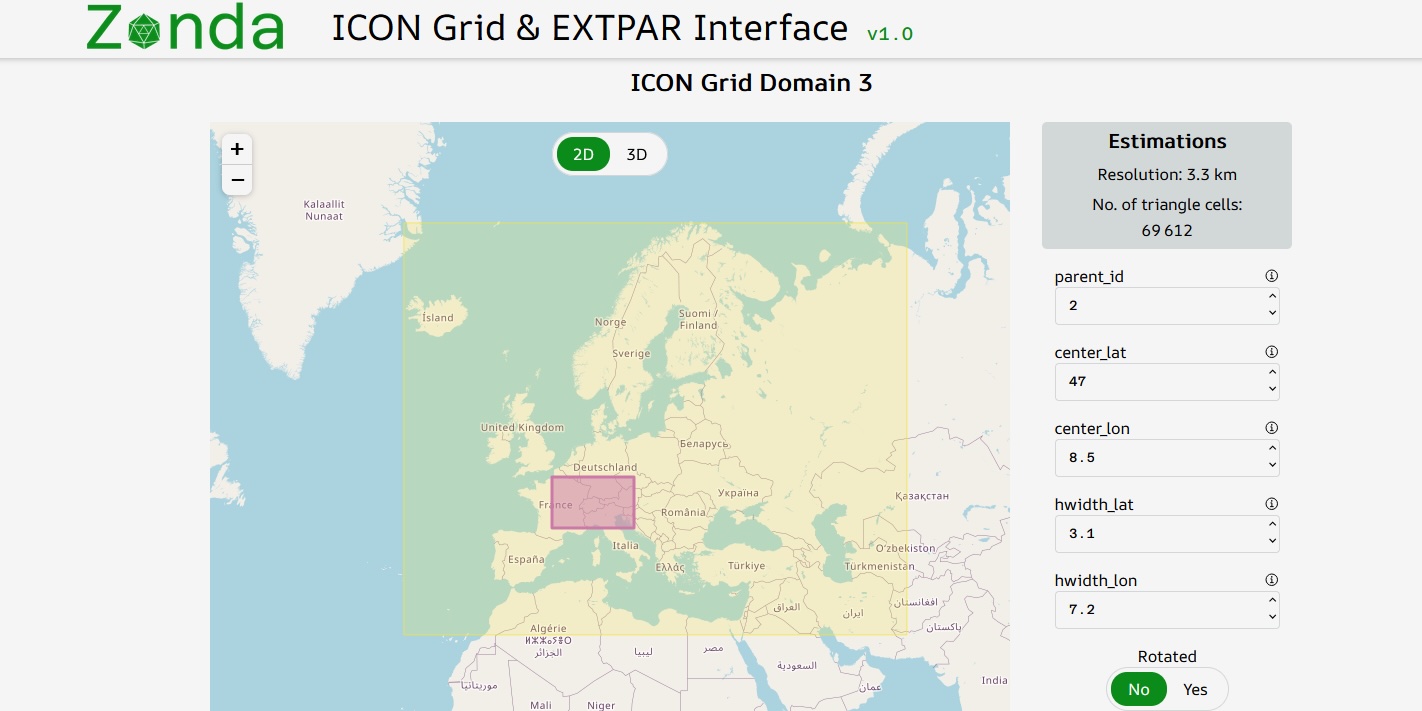
Zonda v1.0 is here – making ICON simulations more accessible
The new web-based tool Zonda for generating external parameter data for the weather and climate model ICON is now officially available. Zonda simplifies a previously complex process and opens the door for more researchers to work with ICON.
Introducing Zonda – a new tool for external parameter data requests
Zonda is a web-based service that allows users to generate external parameter data for the external page ICON (ICOsahedral Nonhydrostatic) weather and climate model. These parameters are required to define physical characteristics of the simulation domain, such as land surface properties and topography. With Zonda, this process becomes more accessible: the user-friendly web interface guides users step-by-step, making it easier for researchers, students, and institutions to run their own ICON simulations.
Previously, generating this data required the specialised software EXTPAR (External Parameters for Numerical Weather Prediction and Climate Application) and significant technical knowledge. The Center for Climate Systems Modeling (C2SM) has been in charge for maintaining EXTPAR for the ICON and the regional model COSMO consortia for several years already.
Six months of focused development, with strong support from partners
Zonda has been actively developed for more than six months. As a part of an ICON consortium effort, C2SM took over the development and implementation of the tool in 2024, building upon earlier prototypes and internal workflows at C2SM. Notably, the existing tool Zephyr (https://zephyr.ethz.ch/) to extract climate data served as a starting point for the frontend and backend development of Zonda.
This has been a cooperation with our partners at MeteoSwiss and Deutscher Wetterdienst (DWD). MeteoSwiss took over the main development of the frontend, while DWD contributed their deep understanding of the ICON model system and valuable feedback throughout the development process.
In line with ICON’s open-source spirit
Zonda reflects the open and collaborative nature of the ICON community. It is freely available to all users via https://zonda.ethz.ch/, linked from the official ICON webpage, and is an essential piece of infrastructure for anyone who wants to perform their own ICON simulations, from global climate modelling to high-resolution regional studies.
By lowering the technical barrier to entry, Zonda facilitates access to ICON and supports its new open-source spirit.
A robust technical foundation
Zonda is maintained by C2SM and runs on computing infrastructure provided by the Institute for Atmospheric and Climate Science (IAC) at ETH Zurich. The backend service automates data generation by using Continuous Integration (CI) and container technology to manage processing requests efficiently. The data generated by Zonda is kept available to the user for seven days and can be downloaded directly via a web browser or a command-line interface.
What’s next for Zonda?
With the release of version 1.0, Zonda is stable and ready for general use. Future developments will include support for additional ICON configurations, improvements to the data processing workflows, and the implementation of advanced user options (e.g., enabling circular domain areas).
Feedback from the ICON community is welcomed and will play an important role in guiding the ongoing development. Users are encouraged to explore the service and share suggestions with the Zonda developers.
The efforts of all those who contributed to this project are gratefully acknowledged:
- Michael Jähn, C2SM Core Team
- Mikael Stellio, C2SM Core Team
- Jonas Jucker, former member of the C2SM Core Team
- Xavier Lapillonne, MeteoSwiss
- Tim Kaspar, MeteoSwiss
- Daniel Rieger, DWD
- and all the Zonda beta testers